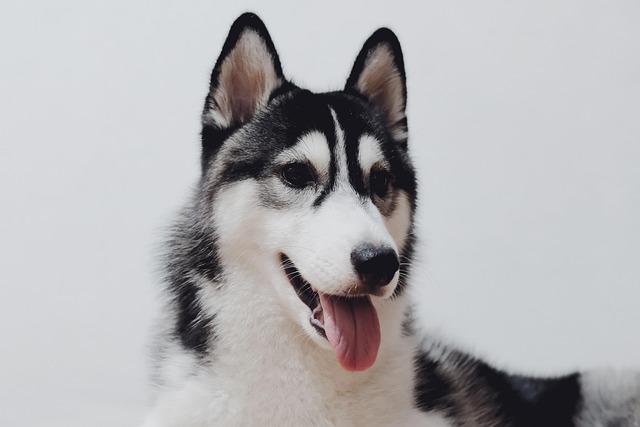
What is glaucoma in a dog?
You might notice your dog squinting more at mealtime or avoiding bright sunlight—these small changes could be early signs of a serious eye condition.
When we joyfully welcome dogs into our lives and carefully prepare various daily necessities for them, a seemingly insignificant but crucial item - a rice bowl - quietly enters our sight. The rice bowl of a dog carries its daily diet and is related to its health and happiness. With deep love and concern for dogs, we are eager to explore: which material of bowl is most suitable for dogs?
From the physiological characteristics of dogs, choosing the material of a bowl requires consideration of multiple factors. Dogs often lick their food with their tongue, which requires the bowl material to be safe, non-toxic, and not cause harm to the dog's mouth and body. Moreover, dogs have very sensitive noses and are very sensitive to odors, so the material of the bowl should not have any peculiar smell to avoid affecting the dog's appetite. In addition, dogs' eating habits may be quite unrestrained, and they may accidentally spill the bowl while eating, which requires the bowl to have a certain degree of stability and durability.
Ceramic bowls are a common choice. Ceramic materials are relatively smooth and not prone to food residue, making them relatively easy to clean. Moreover, ceramic bowls generally do not produce odors and do not affect dogs' acceptance of food. From an aesthetic perspective, ceramic bowls often have a variety of exterior designs that can add fun to a dog's life. However, ceramic bowls also have their shortcomings. It has a brittle texture and is easy to break. If a dog accidentally spills it while eating, it may cause damage to the bowl and even harm the dog. In addition, ceramic bowls are relatively heavy, which may be inconvenient to move for some small dogs or puppies. But for dogs with a gentle personality who don't frequently spill bowls, ceramic bowls are a good choice. Every time we see a dog quietly eating in front of a beautiful ceramic bowl, we seem to see a warm picture and feel the beauty of life.
Stainless steel bowls have many advantages. Stainless steel material is sturdy and durable, not easily damaged. Even if a dog accidentally spills the bowl, it is difficult to cause substantial damage to the bowl. It also has good stability and is not easily overturned by dogs. Moreover, stainless steel bowls have good thermal conductivity, which can keep food at a relatively warm temperature in cold winter, avoiding food from cooling down too quickly and affecting the digestion of dogs. From a hygiene perspective, stainless steel bowls are easy to clean and bacteria are less likely to grow. However, stainless steel bowls are not perfect either. Its surface is relatively hard, and dogs may make loud noises when licking, which some dogs may not like very much.

Plastic bowls are relatively affordable in price and have a lightweight texture, which makes them attractive to some owners. The colors and styles of plastic bowls are also quite diverse, which can meet the preferences of different owners. However, there are some issues with plastic bowls that cannot be ignored. Plastic materials are prone to food residue and bacteria, and even after cleaning, there may still be some bacterial residues. Long term use may affect the health of dogs. Moreover, some low-quality plastic bowls may release harmful substances when exposed to high-temperature food, posing a threat to the health of dogs. In addition, when dogs lick plastic bowls, they may accidentally bite the bowl, causing plastic fragments to fall off and posing a risk of accidental ingestion.
In addition to the common materials mentioned above, there are also bowls made of other materials to choose from. For example, glass bowls are made of safe materials that do not release harmful substances and are easy to clean. But like ceramic bowls, it has a brittle texture and is easy to break, so extra caution is needed when using it. Wooden bowls give people a natural and warm feeling, but the wooden material is prone to moisture and mold, which can breed bacteria and be detrimental to the health of dogs. Therefore, when using wooden bowls, it is important to keep them dry and regularly clean and disinfect them.
When choosing the material for a bowl for a dog, we need to take into account the dog's personality, dietary habits, and the advantages and disadvantages of various bowl materials. Regardless of the material chosen for the bowl, the health and comfort of the dog should be the primary principle. Every time we choose a bowl for our dog, it is a manifestation of our deep love for it. We look forward to choosing the right bowl so that dogs can feel our care while eating, and eat happily and healthily. When we see dogs happily eating and thriving in front of suitable bowls every day.

You might notice your dog squinting more at mealtime or avoiding bright sunlight—these small changes could be early signs of a serious eye condition.

Let’s set the scene: It’s a sweltering Phoenix afternoon—105°F outside—and you rushed your 2-year-old Lab mix, Cooper, on a quick walk to “get it over with.”

Let’s get real: You’re in your Miami apartment, watching your 3-year-old Corgi, Loki, struggle to climb the stairs to your second-floor unit.

Many dog owners brush off occasional scratching as just “dog behavior,” but persistent itching often signals something more—like a food allergy.

You might first notice your dog scratching more than usual—chewing at their paws until the fur looks thin, or rubbing their face against the couch nonstop.

Let’s be real: You’re standing in your Chicago apartment, watching your 3-year-old Beagle, Max, huff and puff just to climb onto the couch.